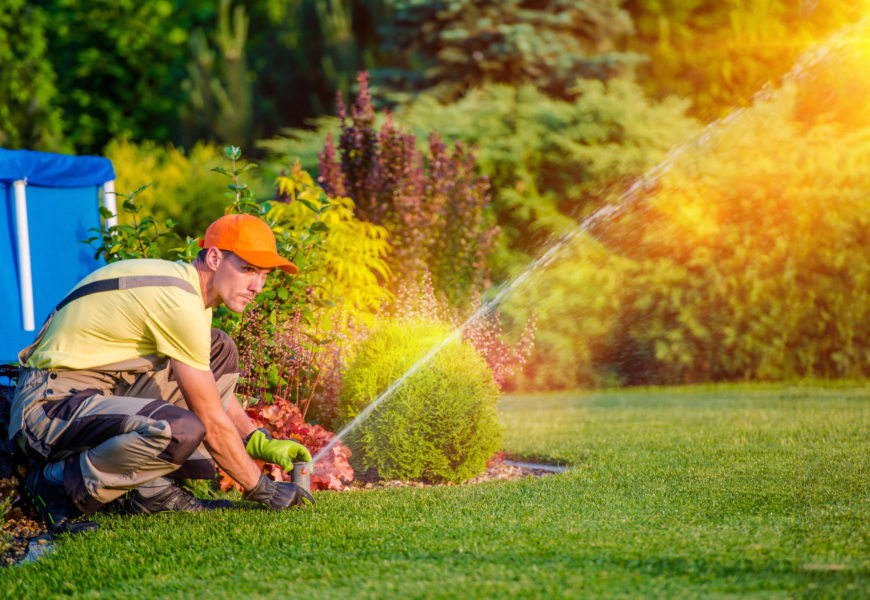A well-maintained lawn is not only a source of pride for homeowners but also a welcoming oasis that enhances the overall aesthetics of a property. Achieving a lush, green lawn requires more than occasional mowing; it demands a thoughtful and consistent lawn care routine. This comprehensive guide aims to provide valuable insights and practical tips for successful lawn care, covering key aspects from soil preparation and watering to mowing and pest control.
I. Understanding Your Lawn:
- Know Your Grass Type: Begin by identifying the type of grass in your lawn. Different grass species have varying care requirements, and understanding your grass type is fundamental to providing the right nutrients and care.
- Soil Testing: Conduct a soil test to assess its composition and pH levels. Soil testing helps determine the specific nutrient needs of your lawn, allowing you to tailor your fertilization approach accordingly.
II. Preparation and Maintenance:
- Aeration: Regularly aerate your lawn to alleviate soil compaction and enhance air, water, and nutrient penetration. Aeration promotes healthier root systems and overall turf vitality.
- Overseeding: Introduce new grass seed through overseeding to fill in sparse areas and improve the density of your lawn. This helps combat weed growth and promotes a lush, uniform turf.
III. Proper Watering Practices:
- Deep and Infrequent Watering: Water your lawn deeply and infrequently rather than shallow, frequent watering. This encourages deep root growth and makes your lawn more resilient to drought conditions.
- Morning Watering: Water your lawn in the early morning to minimize evaporation and reduce the risk of fungal diseases. Morning watering also allows the grass to dry before evening, preventing the development of turf diseases.
IV. Mowing Techniques:
- Set the Right Mowing Height: Adjust your mower to the appropriate cutting height for your grass type. Cutting too short can stress the grass and make it more susceptible to diseases and weed infestation.
- Follow the One-Third Rule: Adhere to the one-third rule when mowing—never remove more than one-third of the grass blade in a single mowing session. This promotes a healthier lawn and reduces stress on the grass.
V. Fertilization:
- Seasonal Fertilization: Implement a seasonal fertilization schedule based on the needs of your lawn. Spring and fall are typically optimal times for fertilizing, providing essential nutrients for growth and winter preparation.
- Use Organic Amendments: Consider using organic amendments, such as compost, to enrich the soil. Organic matter improves soil structure, water retention, and nutrient availability.
VI. Weed Control:
- Preventive Measures: Adopt preventive measures to control weeds, such as regular mowing, proper fertilization, and maintaining healthy turf. A dense, healthy lawn is less susceptible to weed invasion.
- Spot Treatment: Address weeds promptly through spot treatment. Use herbicides or natural alternatives to target specific weed species without harming the surrounding grass.
VII. Pest Management:
- Identify and Monitor Pests: Regularly inspect your lawn for signs of pests. Identify common lawn pests such as grubs, chinch bugs, or armyworms, and monitor their populations.
- Natural Predators and Beneficial Insects: Encourage natural predators and beneficial insects that prey on harmful pests. Ladybugs, nematodes, and certain birds can contribute to a natural balance in your lawn ecosystem.
VIII. Seasonal Considerations:
- Fall Cleanup: Perform a thorough fall cleanup by removing leaves, debris, and thatch. This prevents disease development and prepares your lawn for winter dormancy.
- Winter Protection: Consider winter protection measures such as overseeding, applying a winterizing fertilizer, and ensuring proper lawn drainage to protect your grass during the colder months.
Conclusion:
Achieving a vibrant, healthy lawn is a rewarding endeavor that requires a combination of proper care practices and a deep understanding of your lawn’s unique needs. By following the comprehensive guide outlined above, you can transform your lawn into a lush, green oasis that enhances your property’s beauty and provides a welcoming outdoor space for relaxation and recreation. Embrace the joy of green bliss with a well-cared-for lawn that stands as a testament to your commitment to the beauty of your home.












